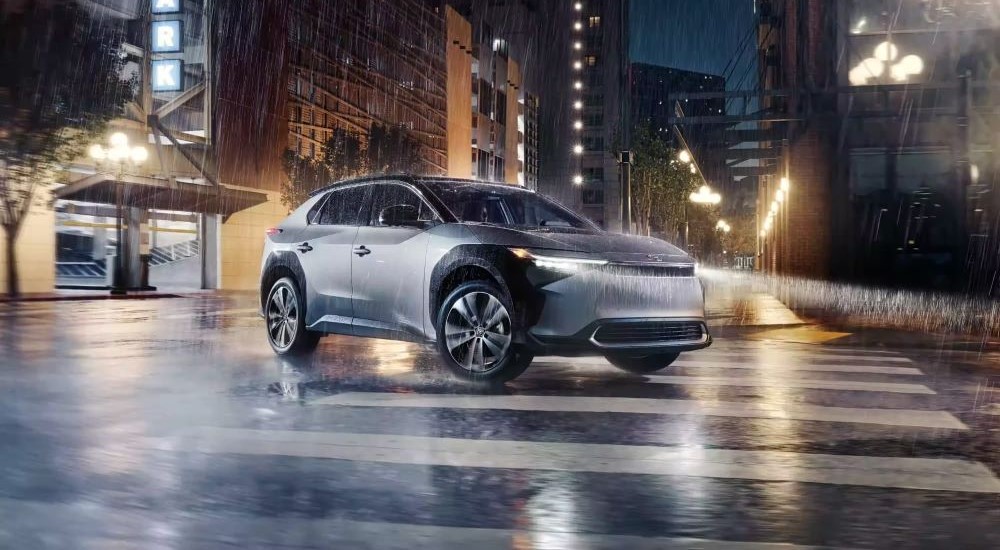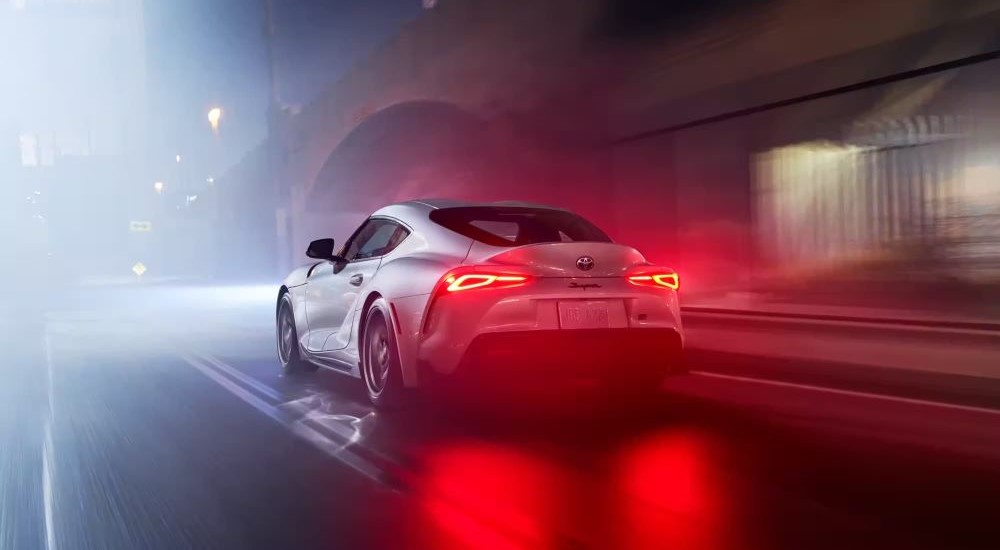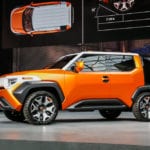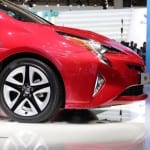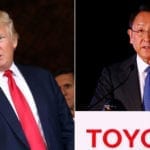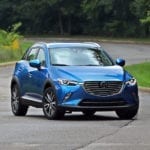Toyota Motor Corporation—you might have heard of them. They’re the largest automotive manufacturing company in the world (by volume), and they didn’t get that way overnight. It took decades of hard work from shrewd and passionate people. It took innovating a system of production that has since become the elite model for lean manufacturing around the world. It took an emphasis on quality that has led the Toyota name to be almost irrevocably associated with immortal design, not in the sense of iconic style or performance but in the sense that the cars just don’t break!
But things are changing in the 2020s. The automotive world is undergoing an upheaval whose closest equivalent might be the invention of the assembly line, and many carmakers are undergoing a transition into “mobility companies” to remain adequately competitive in the mass market. Staring down this inevitable future, Toyota President and CEO Akio Toyoda—the famously passionate driving enthusiast and battery electric vehicle (BEV) skeptic—recognized that he was not the right person to lead the company down this necessary path, so he selected his replacement: Koji Sato.
Sato will become Toyota’s next Chief Executive Officer, effective April 1, 2023. Considering he’ll be the leader of the biggest company in Japan, it’s worth getting to know the guy—so here’s everything I think you need to know about Koji Sato and Toyota.
Started at the Bottom, Now He’s Here
Abnormal as it might seem in America, it’s completely typical in Japanese corporate culture to spend one’s entire career in one organization, and for senior leadership to be promoted from within due to their intimate familiarity with the company. This story is no different for Koji Sato. His Toyota career began in 1992, on the heels of his graduation from Waseda University with a degree in mechanical engineering. At the time, his interest was in diesel engines; he sought to serve society by developing the next generation of these motors, and he has been slowly but surely ascending Toyota’s ranks ever since.
His first responsibilities were to design mechanical components for the Toyota Corolla and for the newborn hybrid concept known today as the Prius. His passion for creating cars—combined with his strong leadership traits—led him to the top of the Toyota mountain, finally reaching its penultimate heights in just the last three years. Appointed as Lexus’ Chief Engineer in 2016—making him responsible for coordinating the activities of hundreds of engineers—he was then promoted to Executive GM, then Executive VP, and finally to President of Lexus in January 2020.

COINCIDENCE?! Yeah, I’d say so. (Moving on…)
An unnamed Toyota executive familiar with Sato’s career has acknowledged that he “acts on the belief that nothing new can be created without pushing things to the limit.” Fitting, then, that in September 2020 he became President of GAZOO Racing, whose motto is “Pushing the limits for better.” Indeed, his love for creating cars is one of his standout traits in the eyes of Akio Toyoda—someone who is in the perfect position to make that assessment, having driven GR’s hydrogen-powered Corolla race car himself in the 2021 Fuji 24 Hours endurance race! A test drive video showcasing the new electric Lexus RZ shows these C-suite colleagues putting the crossover through its paces and generating irrepressible smiles from both. So not only is Sato’s attention to detail appropriate for helming Lexus, but his passion for driving and creating exceptional cars is also suitable to lead Toyota’s performance division!
Even this appointment failed to satisfy the extent of his talents because, not long after, in January 2021, Sato was named the Chief Branding Officer for Toyota, demonstrating the company’s belief in his ability to sustain and transform the images of not only Lexus and GR but of all of Toyota. Based on his own words in the month since the announcement of his upcoming promotion, it’s easy to see why.
Sato Says
There’s much to note about Sato which lends insight into how he’s earned this job. As noted by Akio Toyoda, Sato has “worked hard on the scene of car manufacturing to acquire Toyota’s philosophy, techniques, and manners”—an essential quality for one who would lead Japan’s largest organization. It’s also been observed that Sato exhibits an excellent leadership demeanor, remaining calm in a storm and sustaining energetic, hands-on involvement in the work he’s responsible for. These traits would earn the respect of all Toyota personnel, both senior and junior to him, and their devotion was evident in the first press conference he gave following the announcement.
In his statement, he summarized his perception of the job in three parts: “I believe that my role, as president, will be to maximize the strength of our team as captain. I will listen carefully to the opinions of those on the front lines and unite our team while making the most of the diverse personalities of its leaders.” In other words, he places value in the perspective of every team member, recognizes the importance of capitalizing on the unique strengths of individual leaders, and sees it as his job to support them all.
But Sato’s quality runs deeper than that. Along with a recent announcement of changes to the C-Suite, senior leadership, and Board of Directors, Sato acknowledged something important about Toyota’s change in leadership: “Many of [us] were still at the manager or assistant manager level when President Toyoda took office. Over the past 13 years, by taking on many challenges and experiencing many failures on the front lines, we have continued to learn from various perspectives the values of making ever-better cars and being the best carmaker in town.”
Personal view here: I find something profoundly refreshing and inspiring about the wisdom contained in this quote. I have a hard time with failure. Not so, it seems, for Koji Sato, who embraces failure as a critical building mechanism and genuinely perceives it as a positive outcome when taking on a challenge—in that accepting a challenge is a win-win scenario. In his eyes, the key to leading effectively lies in having run that gauntlet; not necessarily escaping unscathed but having simply done it, with one’s talent in one hand, granted by their successes, and one’s wisdom in the other, gleaned from their failures. I cannot imagine a healthier view of failure.
Why Now, and What Next?
Akio Toyoda’s plan for the future makes perfect sense for Toyota—unable to stay the same, but far from needing a total overhaul, the company merely needs a different set of hands to guide it. Sato’s initial mission will be inheriting the excellent work of President Toyoda and maintaining the company’s founding philosophy while evolving in the way the company needs so as to sustain its success, transforming from a carmaker to a mobility company.
Sato believes in Akio Toyoda’s management foundation, built on the guiding concepts of putting the right people in the right roles and emphasizing those roles over the titles the players are given. He also shares Akio’s belief in taking a panoramic view of the possible solutions to the climate crisis. Foremost he believes a strong lineup of hybrid electric vehicles and hydrogen fuel cell vehicles alongside BEVs is critical. For Toyoda’s part, he accepts the hit to share prices that comes with his reluctance to dive into BEVs, since at least the customers get more fuel sources to choose from. With a personal expectation that BEV adoption has limits, Sato is likely to carry this vision onwards, so Toyota’s industry-leading hybrid and fuel cell lineup should remain a key brand characteristic.
Success, however, requires evolution—and, for this reason, Toyoda is moving on. The transformation of many competitors to become “mobility companies” is driven by CASE, the industry-disrupting acronym for “connectivity, autonomy, sharing, and electrification.” Data connections, self-driving capabilities, ride-sharing economies, and general powertrain electrification features are revolutionizing the industry as powerfully as Ford’s assembly line did a century ago. Competitive vehicles in the rapidly-approaching future will need to support these characteristics, most of which go far beyond simply building a reliable, fun-to-drive body and chassis. Merely making a car is no longer enough, just as merely building a chassis was no longer enough by 1930.
As such, Sato sees three themes in the evolution of Toyota: electrification, intelligence (that is, harnessed information), and diversification. The future of energy requires electrification, he acknowledges, and the form that takes depends greatly on location. Still, the time is now to accelerate Toyota’s BEV adoption. Although the disappointing (in my opinion) bZ4X all-electric SUV might imply otherwise, Sato believes miscommunication is to blame for much of the world’s current perspective of Toyota’s BEV capability. He’s adopted the mission of changing that, and fast. This shall also help his third cause by enabling a diverse lineup providing the right solutions to every region’s specific needs while genuinely pursuing carbon neutrality.
The intelligence portion is interesting; he notes that the mind-boggling volume of information available in a motor vehicle could be incalculably valuable for a mobility company if only they could harness and use it. So that’s the plan, via the Arene software platform, controlling the oceans of data that each car creates and subsequently forming customer-specific driving experiences.
Altogether we’ll have vehicles that are more than mere powertrains, suspensions, and cabins; they’ll be task-oriented appliances and personal mobility providers, hence the term “mobility company.” It’s a strange and subtle thing but an important point to get across. None should be better suited to getting it all done than Toyota’s current Chief Branding Officer, Koji Sato.
Who Ya Gonna Call?
There are radical changes coming—not only to Toyota’s lineups but to the very characteristics of each company under its umbrella—in order to stay competitive in the changing world market. Finding new ways to provide personalized experiences, making accommodations to recognize the growing rideshare economy, and generally producing a sizable share of vehicles on fully electric platforms are prerequisites for success heading into the 2030s. Toyota is especially late to the EV party and has a long way to go to catch up; even Sato has acknowledged that “to deliver attractive BEVs, [Toyota] must drastically change the way [it does] business.”
It’s going to take a lot to drastically change one of the most prolific manufacturers in the world. The Chief Executive will need to relentlessly pursue perfection, pushing against the utmost limits of what electrification and automotive intelligence can do to achieve better, more diverse, region-specific vehicle lineups. They’ll also need to communicate what it means to consumers as Toyota transforms into a company that sells not just vehicles but mobility. It’s almost as though Toyota needs to combine the leadership of their luxury, performance, and branding offices into one person!
Hang on…
I think I know a guy…
